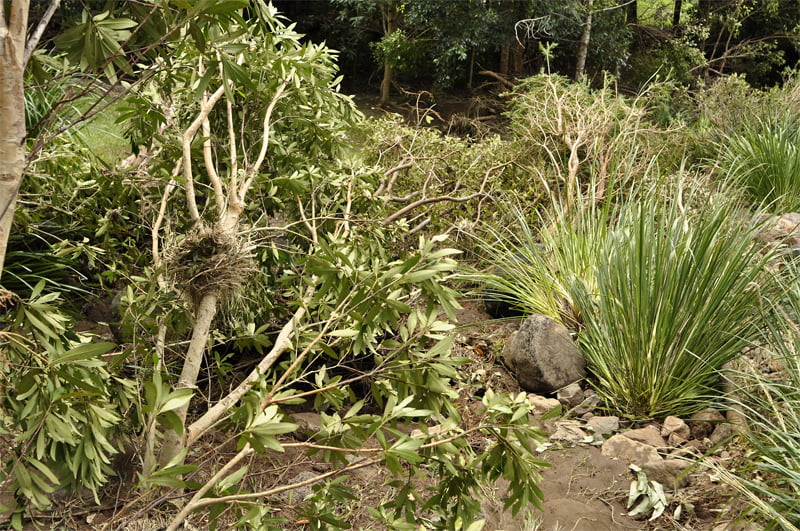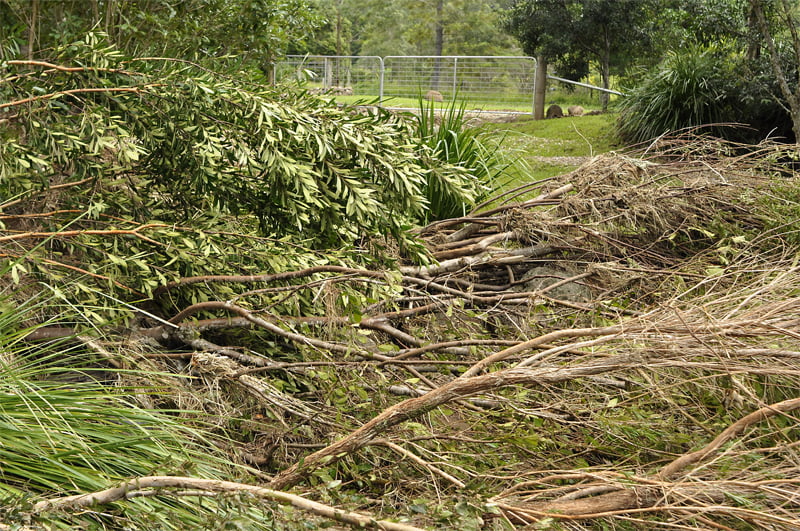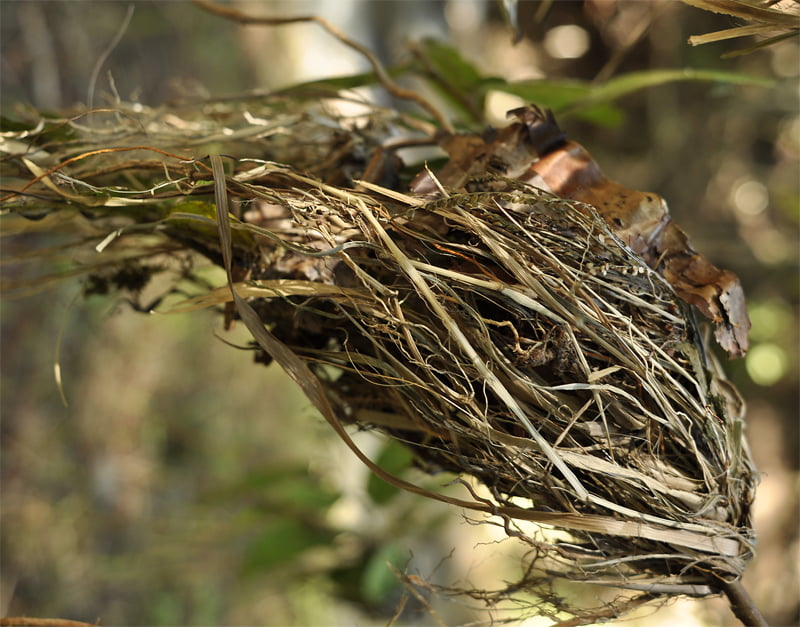My husband and I live in the upper Tweed Valley, northern New South Wales on 5 acres. A major creek traverses our property. For the past 8 years we have regenerated our creek banks with native vegetation and landscaped and planted a mix of exotics and natives in our house yard garden, making around 2 acres in total that we maintain.

The garden becomes a fast-flowing river
We are used to heavy and high rainfalls living in this part of Australia. Thursday 30 March, 2017 started the same as any other wet day in northern NSW. We were told to expect heavy falls of 300 – 400 mm over the next 36 hours as the remains of ex Tropical Cyclone Debbie made its way down the east coast of Australia. We had experienced these falls before so were not overly concerned. My husband was working in Brisbane, 150 kms away and was due home on Friday. We ended up receiving more than 1000 mm over 48 hours. Almost our yearly rainfall!
To say that we and many others were unprepared for the onslaught of water and destruction that ensued is an understatement. Some people lost everything, including lives of loved ones. We are so thankful the water did not get into our house. Our creek broke its banks at around 10am and was flowing through the front garden. Not too bad, I thought. At least it was flowing and could get away. A short time later I noticed a strong dirt smell in the air. I opened the front door and was met with muddy creek water rushing past and moving in towards our front and side doors. I starting using a broom to sweep it away. I thought
I’ll ring the SES and ask if anyone is in the area could they drop off some sand bags.
Ridiculous I know, but at the time it made sense. I was told that I was unreachable. Also the major highway was flooded and my husband would not make it home. Panic set in and I desperately tried to redirect the creek water that had nowhere else to go. In our front garden the creek water was taking away 8 years of mulch, landscaping and soil.
We ended up with a lot of debris in our boundary fence that included leaves, grass, sticks. I have stockpiled it and wondered if I could use it to re-mulch the garden. I gathered some good information from the Kate Wall article and after clearing the silt and debris away from the plants and tree bases, will apply the seaweed solution, organic fertiliser and replace the lost mulch. I’d used bales of sugar cane mulch as it was readily available and a reasonable price. However many sugar farms here were flooded and the next harvest is not until June so I may have to find an alternative mulch.

Uprooted and damaged plants are strewn across the garden
At our creek’s causeway the force of the floodwater was flattening 8 year old native trees, ripping out younger ones, gouging out soil and rocks and trying to take the lomandras but they hung on, tenacious as ever. Our second driveway gone. The rain continued for another 24 hours. The creek raged for a few days more. We lost power and phone.

Eight year old trees are flattened by the fast-flowing flood water
At our creek’s causeway we lost trees and inches of top soil. We propped up the remaining trees, taking off the balls of debris attached to the leaves and staked them upright for support. We felt it important to get them upright as soon possible. We’re not sure if we should prune them to reduce their height as we’re not sure if pruning would add to their stress. Now we just have to wait and see what survives and what doesn’t. But overall we think we were the lucky ones.

